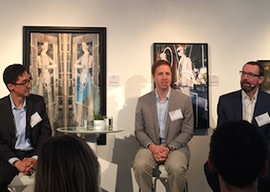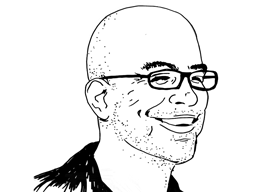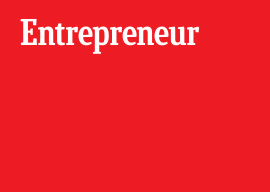A while back, I had a job helping school employees assemble personal learning networks or PLNs. I encouraged them to dive into online communication, for the purposes of taking control of their own professional development. I told them to be audacious and introduce themselves to the authors whose books they read. Those who did, deepened their pool of colleagues and created opportunities that wouldn’t have existed otherwise.
Now it’s 2015, and Continuum, the global innovation design firm where I work, has just joined Boston's High School Redesign project—and I see that PLN planning is totally applicable to today’s students. Applicable? It’s necessary. The collegiate and work futures for many young people today are uncertain. What is certain: Making strong connections and staying up-to-date with contemporary thinking are perquisites for thriving in any given field. It is, therefore, up to Generation Z to grab the virtual reins and start networking their education. Why wait for teachers or administrators or parents to set them up in partnership programs, when they can take action for themselves, and personalize the process, right now, with the online tools they use every day? By doing so, they make learning more dynamic and engaging.
Connecting with Wise and Influential People—let’s call ‘em, acronymically, WIPs—who make real things happen in our students’ areas of interest, will help burst the confines of the classroom and textbook to create new learning and work paths. Such connections will educate the whole person and integrate work, life, and learning. As Tony Wagner and Ted Dintersmith write in Most Likely to Succeed: Preparing our Kids for the Innovation Era: “The primary goal of education at all levels should be to expose students to a wide array of pursuits and help them find what they love spending time on.”
Here are six things Gen Z should keep in mind while building networks:
Find relevant WIPs online, listen, and learn. Students must start by identifying the professional authorities with whom they’d like to partner. Some dedicated online research will turn up stories about the proper WIPs (local business people they’d like to work for, subject-matter authors, academic experts). WIPs often have personal websites or list their emails on a university or company site. Even if they aren’t clearly listed, this information can usually be shaken out of Google. Many blog or tweet regularly. Students should locate relevant WIPs, and read all they stuff they post. Carefully. By paying attention to the WIPs’ public comments, students will soon pick up the terms they favor and understand their various points of view on important professional issues.
Interact. Yes, students should follow their WIPs online, but being a mere follower won’t itself weld a connection. Young PLN builders must be brave enough to enter into a mature dialogue with WIPs. Smart conversations can lead to real relationships which can, over time, evolve into informational interviews, internships, co-ops, recommendation letters, even jobs. But it begins with showing WIPs that they are curious and confident.
Talk the talk. When students use the WIPs’ own language—ideally by citing parts of their books, articles, or blog posts back to them—they signal that they are serious. But quoting is only the first step. The second requires students to apply the WIPs’ words to their own educational and/or work experience and ask some good, focused questions. The communication they put out should play back the same rigor shown in the WIPs’ work.
Remember that the PLN should be expansive. Interaction should not be limited to a single conversation, or even a series of conversations, with a single WIP. The PLN is a community, an active evolving one. Diversity matters, as does regularity. Students should always think of deepening conversations and finding new people to add into their PLNs.
Be patient. This one can be tough for Gen Z. WIPs are, in general, busy people and students are, in general, unused to dealing with, say, over-scheduled executives. The kids who will forge strong PLNs are those who understand that this process might take a while. Or that some experts might never even respond. A certain element of resilience is required.
Pay attention to details. Students need to treat their PLN communications as seriously as they treat papers in their English classes. Actually, they need to treat them better than that. The emails and tweets and comments they offer to WIPs could be transformational. They must therefore be carefully constructed and proofread. Students who want to sound like colleagues, not kids, will take great care.




